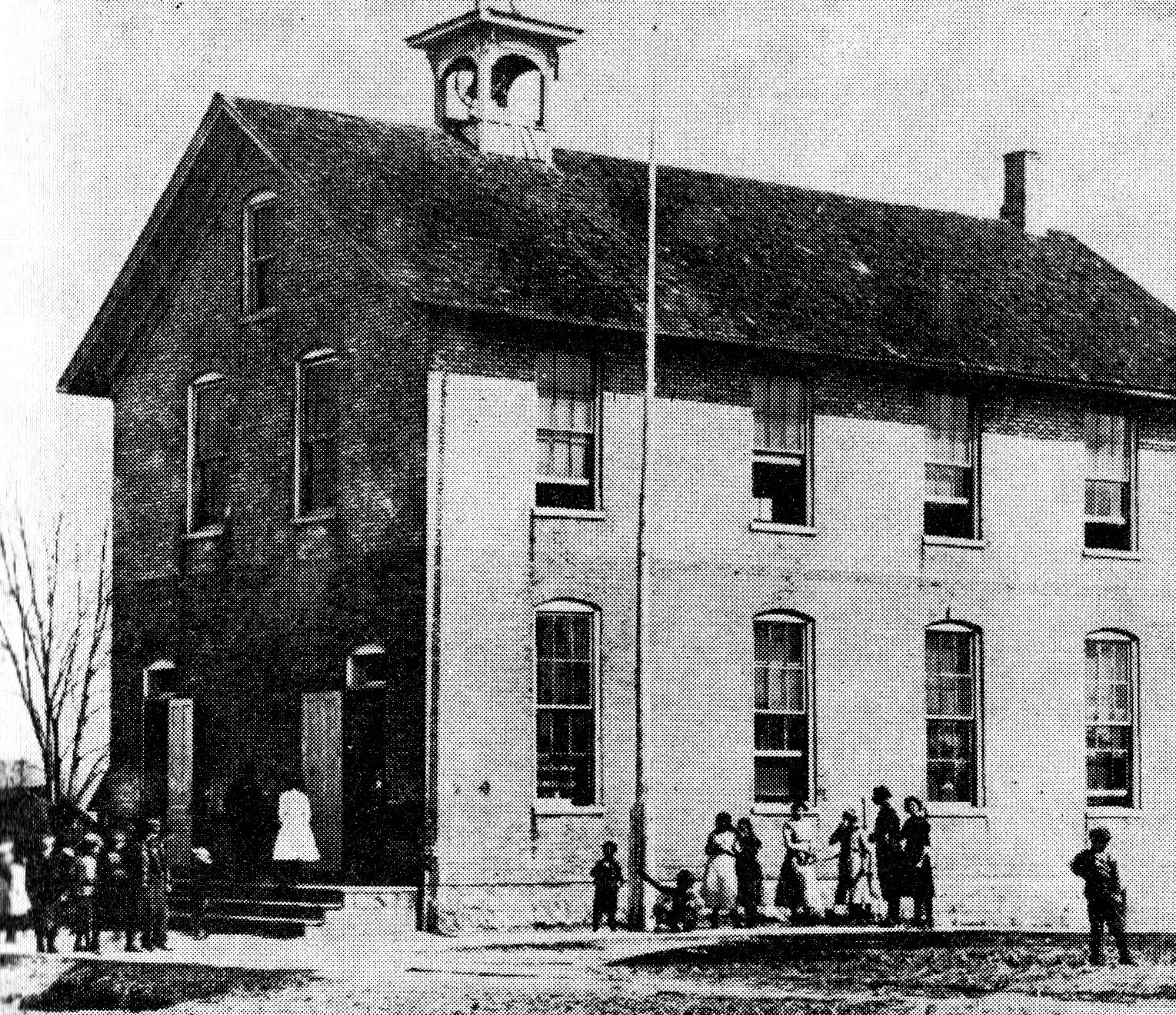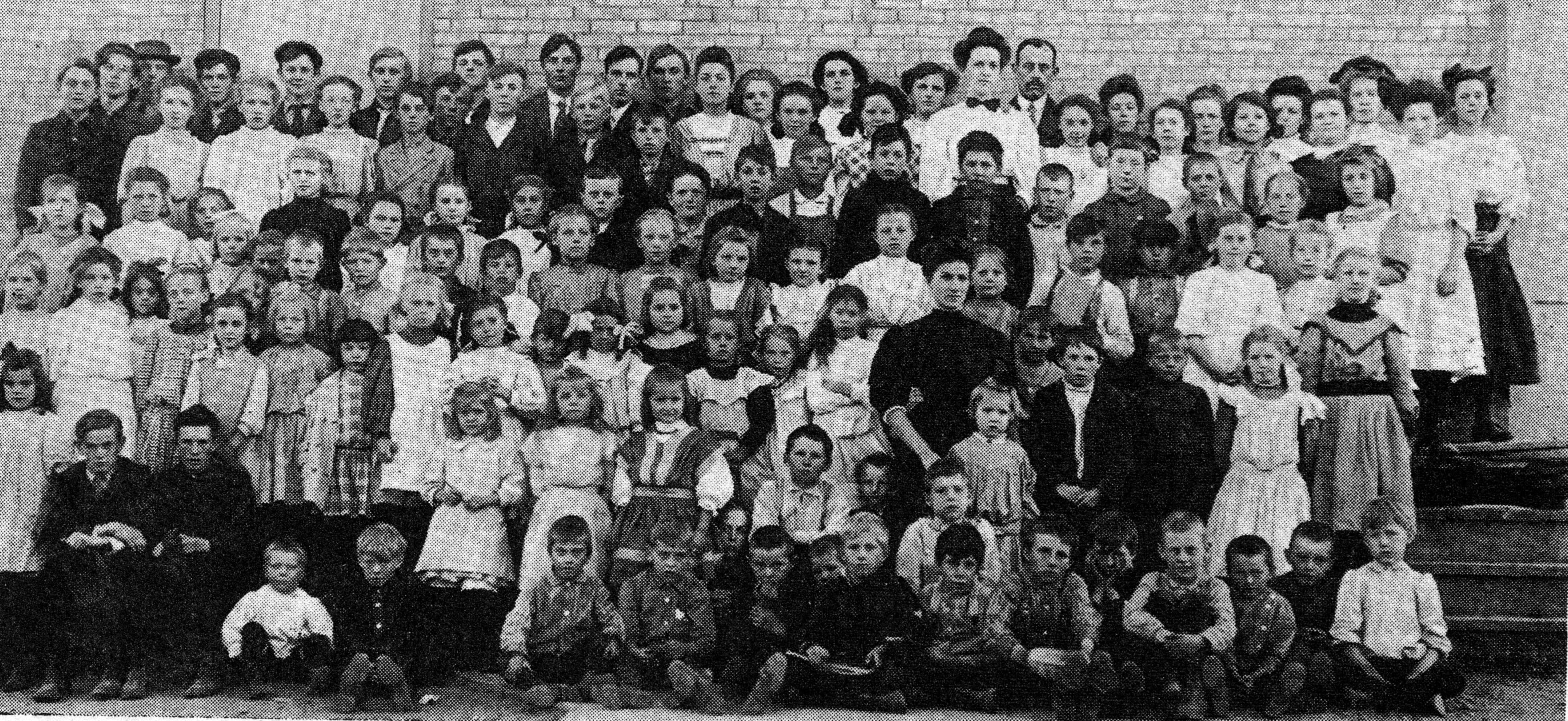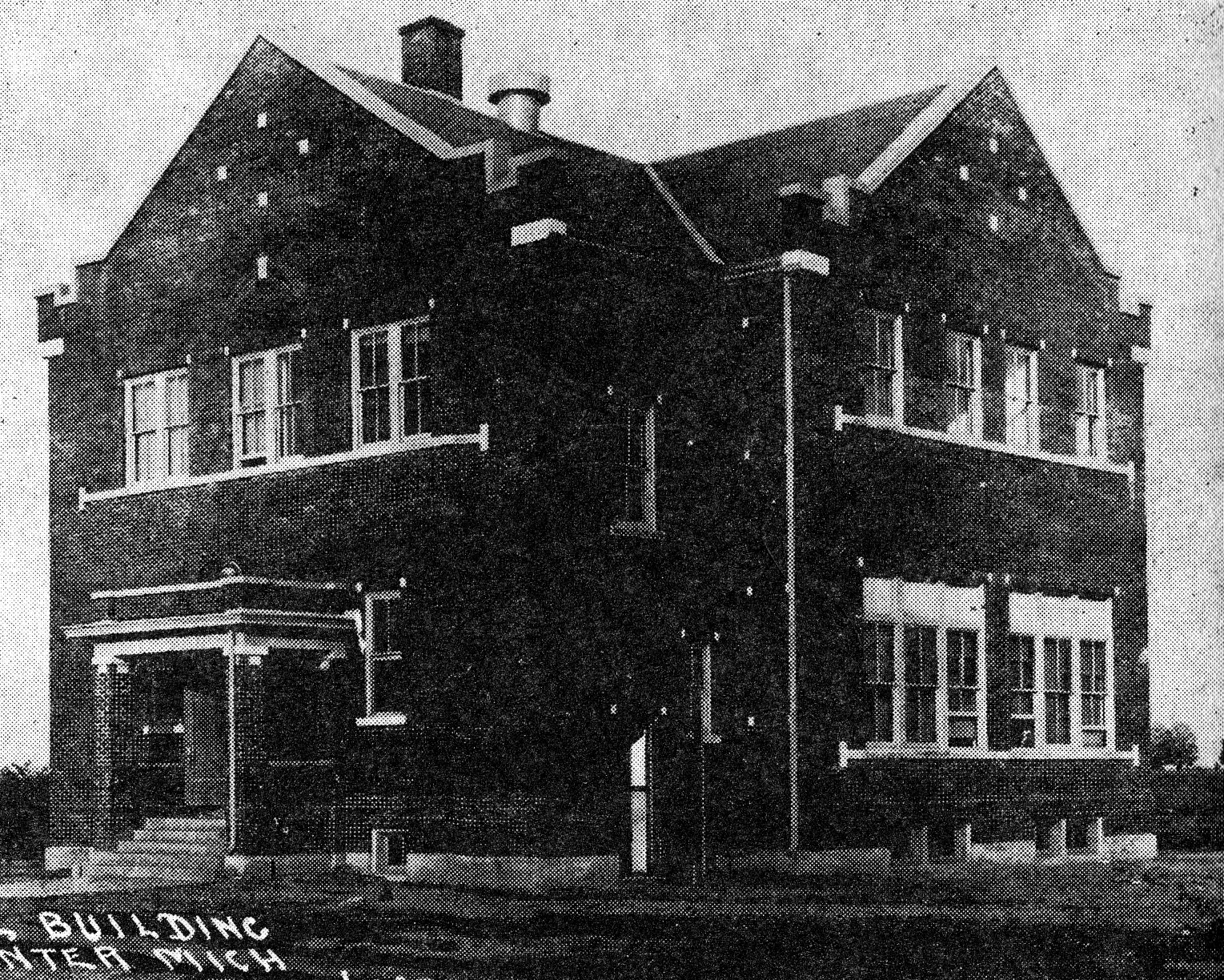BYRON TOWNSHIP SCHOOLS
|
Mrs. Jerry Boynton taught the first
school in Byron township. The building was temporarily constructed of boards. It
was located in the northwest quarter of section 5. She had a small group of
pupils, fourteen in all. Section 5 is the VanNess district. Mrs. Anna (Tobey) B. Sharp, one of the earlier school teachers wrote her own obituary as follows: Anna B. Sharp was born in Massachusetts, January, 1854 and came to Byron Center with her parents in November, 1869. In the summer of 1871, taught in the little old schoolhouse that stood on the north side of Main Street, Byron Center. In 188, she was married to Peter B. Sharp of Gaines township. They had a son, Wayne A., who lives near Clarksville and with whom Mrs. Sharp had always resided in Byron Center or vicinity. She has seen Byron Center grow from a one street village of seven buildings, to the prosperous grand village. The obituary was handed to Lila M. McFall by Mrs. Sharp, who asked to see that it was published in the South Kent County News. The old schoolhouse was getting so dilapidated and overcrowded that it was decided to build a new one. In 1880 or 1890, a one story schoolhouse was built of brick, on the SE corner of Prescott and Church Streets, opposite corner of the M.E. Church. When the new schoolhouse was finished the pupils moved from the old to the new building. In a short time this was not large enough, then the roof was raised and the second floor was added. In 1901, this building had the
first three grades on the main floor, and the rest were on the second floor with
a recitation room for the 4th, 5th, 6th and
part of the 7th grades. The principal had the rest of the 7th,
8th, 9th and 10th grades. In 1933 the kitchen and stage were built under the W. P.A. times. In 1951, bonds were sold for additional class rooms and workshop. The building was occupied after Christmas, the winter of 1952. The new twelve room high school was dedicated June 13, 1952. In 1955 bonds were issued for eight additional Elementary class rooms, gymnasium and bus storage and garage to be built. |

BYRON CENTER SECOND SCHOOL
(In the picture, you will note where the original roof of the school was
before adding the second floor)
Holding the pump handle: Jennie (VanOwen), Bessie
Goudzwaard (Mrs. George VanDerZaag), and Jessie Crocker (Mrs. John Shook)
Drinking: Rebecca Grantham (Mrs. Carl Irwin)
On porch with back to camera, Josephine Kloss
Teacher with the class, Orphan Boynton (Mrs. Adams)

1904 Graduation Class from Byron Center
(There were graduating classes in 1901-1903 but there are no pictures of
them.)
Standing Left to Right - Ray Fleeser, Edna Cooper,
Jessie Rackett, Katie Simon, Russell Flesser
Seated Left to Right - Robert O'Meara, Albert Fitch, Robert Wedgewood

BYRON CENTER SECOND SCHOOL - 1909 CLASS
|
Back Row Left to Right - Henry
Stickley, Everett Cooper, Henry Meyering, Glenn McKenney, Elgin King, Harvey
Loomis, Roy Weaver, Earl Ball, Paul France, Rosamund Averill, Lulu Marshall,
Olive Loomis, R. E. Haskins, Principal; Alice Burwell, Florence Keefer, Margaret
Allen, Ivan Wright, Kattie Wierenga Second Row Left to Right - John Stein, Dora DeJong, Unknown, Sadie DeJong, Homer Cooper, Leland Haynes, Manley Concidine, Ira Wescott, Dick Wierenga, Alice Nyenhuis, Grace Skinner, Nellie Christian, Dora Hickox, Teacher: Amber O'Meara, Edna Theil, Lona Smith, Hazel Huff, Bertha Williams Third Row Left to Right - Rena Smith, Emma Wierenga, Edna Hickox, Nellie Dreyer, Buelah Marshall, Alwilda Theil, Henrietta Nyenhuis, Arthur Daining, Harvey Skinner, Edward VanHouten, Will Trew, Carl Levett, Albert VanSolkema, Clarence Theil, Leslie Irwin, Unknown, Eula Higby, Tille Stein Fourth Row Left to Right - ---- Hathaway, Unknown, Unknown, Ward Narrengang, Unknown, Jesse Maris, Cleone Cooper, Floy Webb, Tillie Kurdelski, Lillie Williams, Lucille Patterson, Buelah Webb, Glenn Trew, Harold Warner, Frances Hofman, Anna Kurdelski, Jennie Dreyer Fifth Row Left to Right - Unknown, Dedetha Levett, Dorothy Christian, Gladys Keefer, Lila Phelon, Wendell Cooper, Daisy Levett, Unknown, Gladys Patterson, Hazel Theil, Leigh Patterson, Unknown, Mary Kloss, Unknown, Elsie Haynes, Lulu Levett, Dena VanderWall, Teacher; George Hickox, Frances Sweezy, Henry Kloss, Nellis Williams. Sixth Row Left to Right - Edith Cheyne, Beatrici Baker, Gertrude Kurdelski, Josephine Brown, Edith Smith Seventh Row Left to Right - Leslie Williams, Hark Huff, Albert Theil, Lloyd Concidine, ---- Stein, Donald Haskins, Lawrence Carpenter, Ralph VanSolkema, Jacob Kooienga, Unknown, Gail Cooper, Ruel Smith, James Burwell, Andrew VanSolkema, Lyle Huff, Unknown, Unknown, Henry Kooienga, Athel Smith |

Byron Center Third School Building - Built in
1915
This building burnt on Christmas, 1917

Byron Center School - Fourth Building